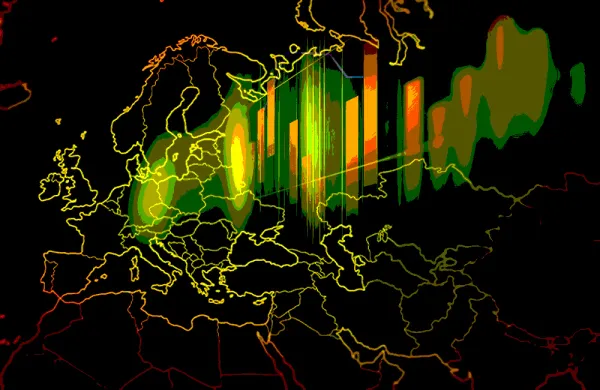[Q] What has led up to Russia’s corporation action reform plans?
Corporate action processing and voting systems in Russia involved significant paper-based workflow. Documents had to be translated, notarised and then mailed directly to the issuer. That was costly and time-consuming. The changes in frames of the corporate actions reform are designed to reduce direct and indirect costs, mitigate risks, grow the investor base and simplify processes for getting access to corporate information, regardless of the location of the issuer or the asset holder, hence, to improve the reliability, quality and speed of communication. This reform will improve the conditions that would encourage foreign investors to enter the local market rather than rely on depositary receipts.
[Q] How does this work?
Simply put, e-proxy voting is conducted in two stages. At the first stage, an issuer sends its agent, or registrar, a notification of an upcoming meeting of securities holders using electronic channels, including key dates and issues to be considered at the meeting. The issuer sends materials for the meetings with the notification, and also provides instructions to create and send an electronic ballot for those issues to be put to a vote. NSD sends this electronic message to its clients, while materials for the meeting are uploaded to a protected server, and the link to the server is added to the notification.
At the second stage, once the notification of the meeting has been received, depositories collect information from their clients both on their intentions regarding inclusion in the list of persons entitled to take part in the meeting and the voting procedure, which will have been established in an agreement earlier. The depositories then transfer this information to a registrar, so in order to vote at the meeting, securities holders just have to inform the depository of their intention. The depository transfers the information to a superior record keeping institution, for instance, to the CSD, which in turn passes the notification to a registrar.
[Q] What are the benefits of e-proxy voting? Does a shareholder’s representative need to submit a power of attorney?
E-proxy voting lets investors from around the world exercise rights on their securities remotely, using electronic technologies. Securities holders do not have to personally attend a shareholder meeting, they can receive all documents and inform a custodian or a depository of their opinions and votes. There is no need to prepare a power of attorney or other documents for a shareholder representative—the right to take part is determined by an entity that keeps record on securities rights. E-proxy voting assumes the use of international standards and electronic channels of interaction. It significantly facilitates investors’ participation in shareholder meetings conducted by Russian issuers.
[Q] When will investors be able to use the service?
Many participants in the Russian market have already implemented the service, or are working on implementing it. For instance, in 2015, 79 issuers, including major players such as Sberbank and Gazprom, conducted their meetings using e-proxy voting through NSD. If an investor’s custodian or depository supports the e-proxy voting technology, they will already be able to use all the advantages of the service.
However, starting 1 July 2016, Russian issuers will have to provide an opportunity to take part in shareholder meetings via e-proxy voting.
[Q] How much does it cost?
The fee charged by NSD for participating in a shareholder meeting is US$2[1] per voting instruction on items on the agenda (for each security). The cost of participation in a shareholder meeting using the e-voting service includes the NSD fee and the fee charged by the final depository. Taking into consideration that previously foreign investors were required to issue a power of attorney for their representative and to reimburse expenses for personal attendance at the meeting, e-proxy voting should be more convenient and less expensive for investors. The fee for participating in corporate actions related to securities and cash transfers (for instance, securities buyback) is less than US$8[2] per instruction.
[Q] Can I be sure that my vote is received and registered by the issuer?
NSD uses straight-through-processing (STP) in the e-proxy voting, and receives an instruction to vote from a depository, which has formed it on the basis of an instruction received from an investor. NSD then transfers that to the issuer in electronic form, and at the same time sends a report back to the depository confirming each stage of the document’s transfer. Therefore, the depository can inform its client, the investor, on the status of the instruction sent, and the investor can be sure that his or her decision is sent to the issuer on time.
[Q] On which issuers’ shares is e-proxy voting available?
There are limitations until 1 July 2016. Currently, the e-proxy voting service should be used only by joint stock companies that have opened a CSD account, which investors can clarify with their custodians or depositories. From 1 July 2016, the e-proxy voting technology should be supported by all Russian joint stock companies with securities in nominee accounts opened with the depository.
[Q] How will NSD disclose information in view of e-proxy voting?
The new legislation that will come into effect in July 2016 will introduce a new procedure for disclosing information on corporate actions. The issuers registered with NSD will have a nominee account and will have to submit information to NSD on corporate actions, including all required materials. This means that information from NSD will prevail over information published by other sources.
If investors do not wish to take part in a corporate action, they may not submit information about themselves, meaning that information about those investors will not be put in a list of those entitled to take part in shareholder meetings.
[Q] Which channels and formats are used for transmission of voting instructions?
E-proxy voting by NSD uses the ISO 20022 format for interactions with clients and registrars. NSD also converts messages in the ISO 15022 format used by many custodians and depositories. Voting instructions can be transmitted simultaneously via several electronic channels, including SWIFT and other special online services.
More information on corporate actions reform and the e-proxy voting service you can find at corpactions.ru/en
[1] At the official exchange rate of the Bank of Russia as of 19 January 2016.
[2] At the official exchange rate of the Bank of Russia as of 19 January 2016.






